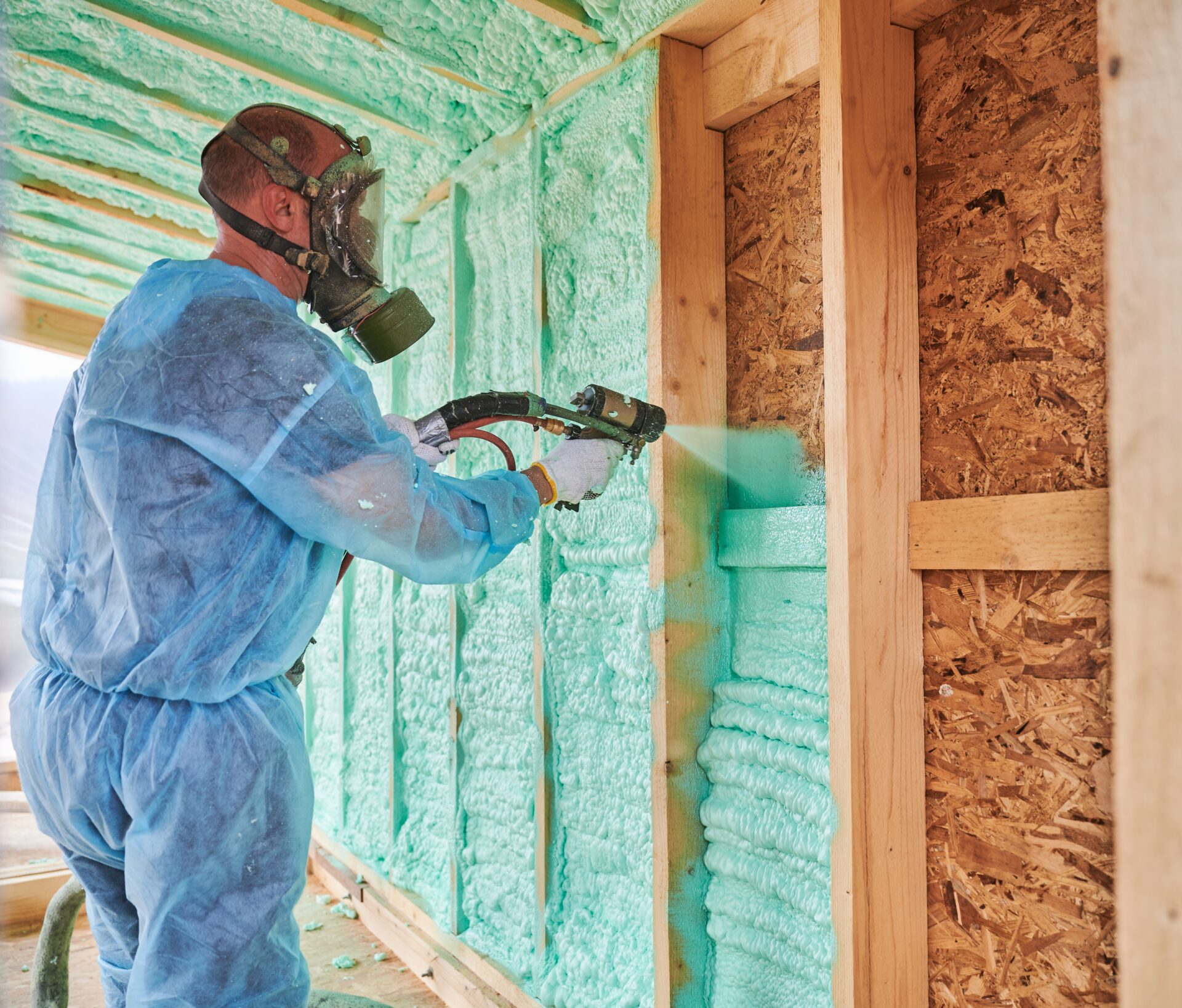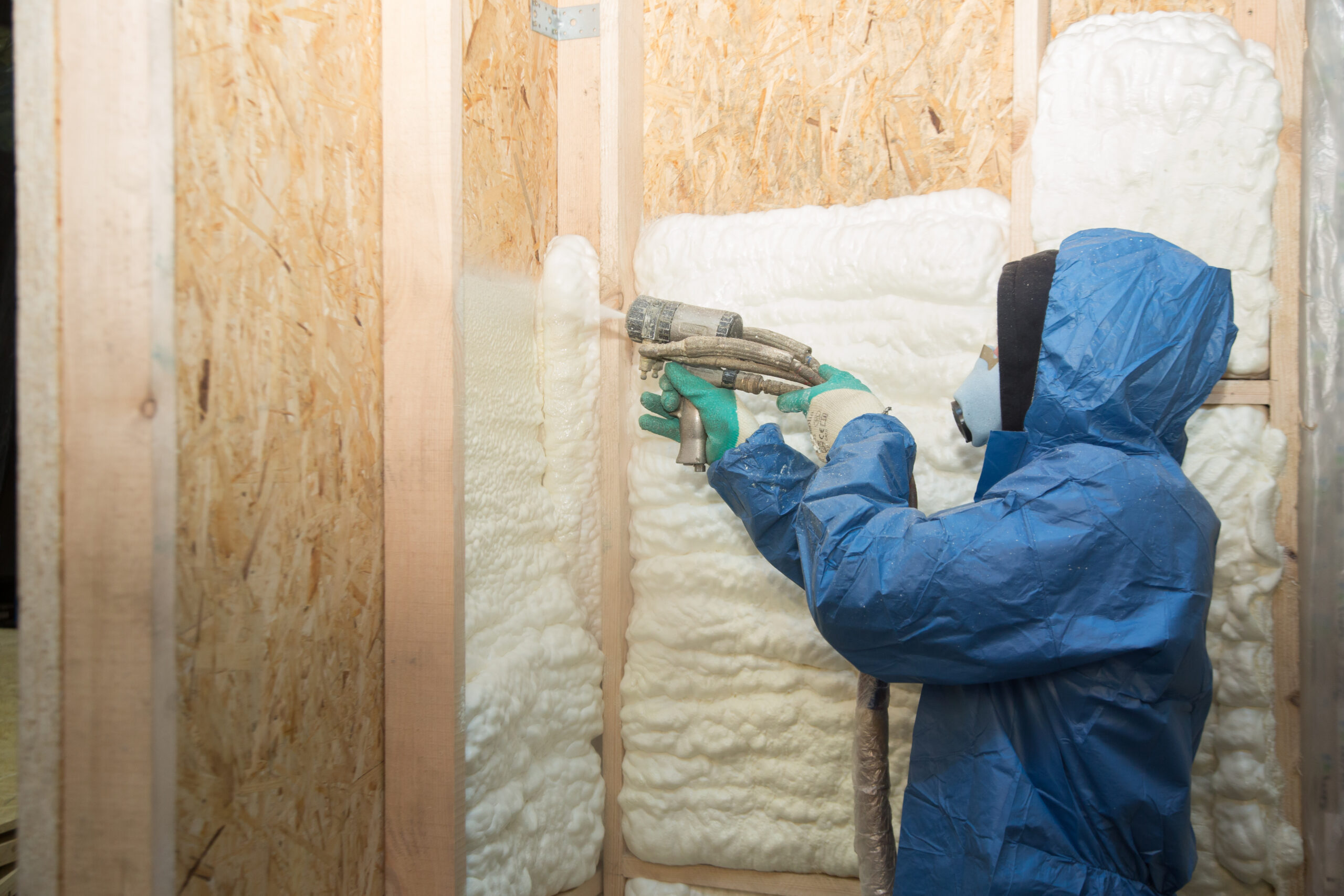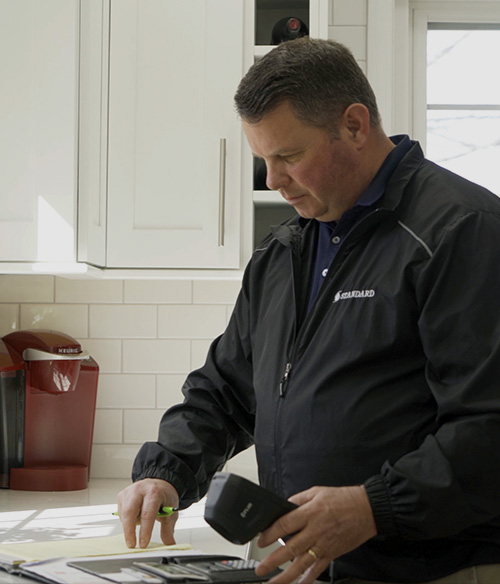The Process of Using Spray Foam Insulation in New Home Construction

Using spray foam insulation is a cost-effective, energy-efficient option for insulating your home. This innovative product expands upon application, conforming to the specific space and sealing tiny openings. For new construction, installation is straightforward and easy to accomplish before the walls, ceilings, and floors are finished.
To help you better understand the reasons you may want to choose this type of insulation for a new home, let’s explore the characteristics of spray foam insulation and the benefits of using it during new construction.
What Is Spray Foam Insulation?
Spray foam insulation is sometimes referred to as “plastic foam” because it is made of polyurethane. During application, polyurethane mixes with another composite, isocyanate. Once the two combine, the chemical reaction expands and hardens the materials, forming a protective layer with superior insulating capabilities.
This type of insulation is particularly well suited for use in new construction and spaces gutted during renovations. Depending on the space, project, and goals, two types of spray foam insulation may be used during new construction or renovations: open cell or closed cell.
Open Cell Spray Foam
As its name implies, open-cell spray foam is made up of open cells, with more than half of them made up of air. This insulation is often made of polyurethane, but it can also be made of reticulated foam or open-cell rubberized materials. It has an R-value, which indicates the insulation’s heat flow resistance, starting at 3.6 per inch. This type of insulation is ideal for enhancing energy efficiency, retarding moisture, and muffling sound.
Closed Cell Spray Foam
Closed-cell spray foam is made of entirely closed cells that don’t interconnect. It can include various materials and densities, including neoprene, EPDM (a type of synthetic rubber), and PVC. This type of insulation is well suited for use in sealing areas as well as providing insulation, and it has an R-value that begins at 5.7 per inch.
Benefits of Using Spray Foam Insulation
Using spray foam insulation provides incredible versatility and protection for homes in the Mohawk Valley and Capital Region. This type of insulation can provide an air and moisture barrier, strengthen your home’s structure, and enhance energy efficiency. Some of the primary benefits of using spray foam include:
Improved Comfort
Spray foam insulation helps reduce ambient noises, both from outside and between rooms. It also seals gaps, providing a barrier against insects, pollen, dust, and other pollutants. Additionally, spray foam seals leaks, reducing drafts and contributing to more stable indoor temperatures.
Enhanced Energy Efficiency
Sealing air leaks and ensuring your home is properly insulated helps reduce energy loss and saves as much as 20% on energy bills. Adding spray foam in attics, behind knee walls, in basements along rims joists and windows, along open soffits, and in plumbing vents can help enhance efficiency.
Superior Structural Strength
Using spray foam may also strengthen the structure of your home, helping to lengthen its lifespan and make it more resilient. The foam works by bonding to the surfaces where it’s applied, enhancing its ability to withstand stress. It also protects the structure and essentially provides a waterproof layer that protects from moisture damage.
How Spray Foam Insulation Gets Applied During New Construction
Spray foam products are optimized for use in various areas of the home, each with its own unique benefits. Speaking with the professionals at Standard can help you determine the best spray foam insulation for use during new construction or renovations. To better understand how the insulation works, consider its application in the following three key areas:
Attics
Spray foam can be applied and used in various ways as attic insulation. For example, in vented attics, technicians often use it to insulate attic floors and help prevent conditioned air in spaces from leaking outside. It also prevents energy loss and potential moisture problems. In unvented attics, technicians typically apply it to the interior of the roof deck, providing an essential air barrier. Spray foam expands upon application to attic walls, ceilings, and floors, filling gaps and cracks and sealing any air leaks.
Walls
For new and existing construction, spray foam offers an excellent, energy-efficient option for wall insulation throughout the home. It also helps insulate basement walls and ceilings. The foam fills voids, seals gaps, and provides a thermal barrier to keep conditioned air inside the home while preventing hot or cold outside air from seeping into the house. This helps maintain consistently comfortable temperatures throughout the home. At the same time, it helps muffle outside noises when applied to exterior walls, leaving you with a quieter interior.
Crawl Spaces
Spray foam doesn’t just provide insulation for crawl spaces; it also seals the crawl space, limiting moisture issues, reducing pest problems, and helping boost your home’s energy efficiency. It can be applied to the interface between the foundation and wood frame walls, and it can insulate subfloors, the perimeter foundation walls, and hard-to-seal spots throughout the framing and foundation. Using spray foam insulation also helps seal and insulate ducts that run through the crawlspace, reducing the loss of conditioned air throughout the home.
Contact Standard to Learn More
Standard specializes in using spray foam insulation for renovations, new home construction, and other options to suit your needs. We have been the Mohawk Valley and Capital Region’s go-to new construction insulation contractor since 1928, and we promise to put your interests first and save you money while helping you live more comfortably.
Call us today at 1-800-738-1424 to learn more or to schedule a free estimate.



